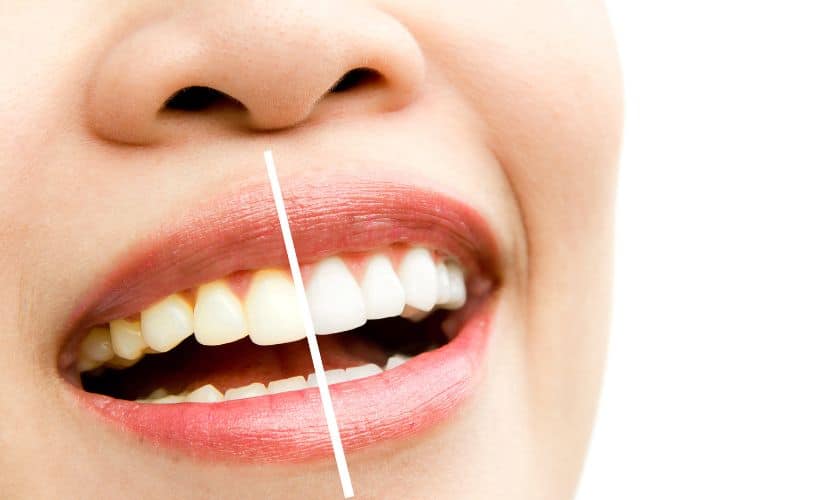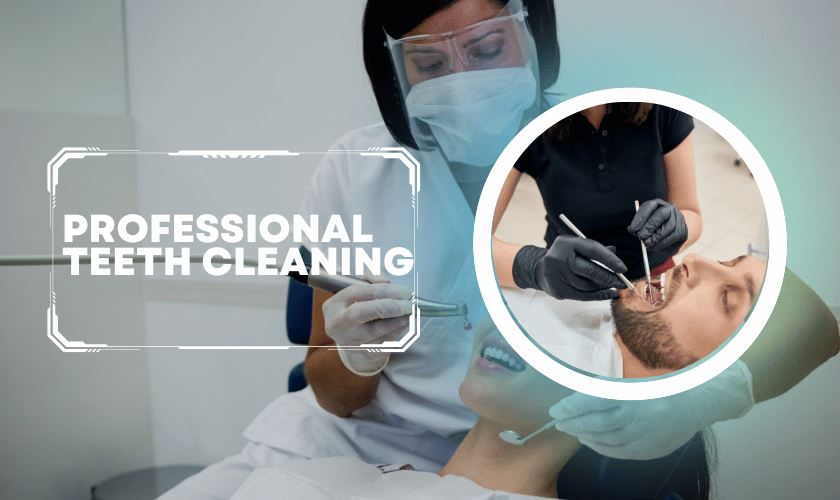Welcome to our latest blog post on how to maintain your white smile after whitening treatment! So, you’ve just completed a teeth whitening session and love the new bright shade of your pearly whites. But how do you keep it that way? Fear not, we have some tips and tricks for maintaining a dazzling smile long after your whitening treatment. In this post, we will guide you through the best practices for keeping your teeth looking their best while ensuring they stay healthy too. Let’s get started!
What Causes Teeth to Yellow?
Tooth discoloration can be caused by a number of things, including:
Drinking coffee, tea, or red wine
Smoking cigarettes
Eating certain foods (like curry or soya sauce)
Not brushing your teeth regularly
Using toothpaste that is not designed for whitening
Having dental work done (like getting a crown or veneers)
Discoloration can also occur as we age since the enamel on our teeth starts to thin and wear down. This makes the yellowish dentin underneath more visible.
Foods and Drinks That Can Stain Your Teeth
There are a few foods and drinks that can cause staining on your teeth, even after you’ve had them professionally whitened. These include:
Coffee and tea: Both coffee and tea contain tannins, which can cause staining. If you can’t give up your morning cup of joe, try to brush your teeth immediately afterward.
Red wine: Like coffee and tea, red wine contains tannins that can lead to staining. To avoid this, drink red wine in moderation and always rinse your mouth out with water afterward.
Tomato sauce: Tomatoes are another food that can cause staining due to their acidity. If you enjoy tomato-based dishes, be sure to brush your teeth well afterward.
Berries: Many berries, such as blueberries and cherries, contain dark pigments that can transfer to your teeth and cause staining. Eat these foods in moderation and be sure to brush afterward.
If you follow these tips, you can help keep your teeth looking white and bright after getting them professionally whitened!
The Best Way to Whiten Your Teeth
Whitening your teeth is a great way to improve your smile and confidence. However, it is important to maintain your white smile after the whitening treatment. Here are some tips to help you:
1. Avoid foods and drinks that can stain your teeth– These include coffee, tea, red wine, and cigarettes. If you can’t avoid them altogether, brush your teeth or rinse your mouth with water immediately afterward.
2. Use whitening toothpaste or mouthwash daily– This will help to remove any stains that have already formed on your teeth and prevent new ones from forming.
3. Schedule regular dental cleanings– Professional cleanings will remove any deep-set stains and help to keep your teeth looking their best.
4. Touch up your whitening treatment every few months– This will help to maintain your bright, white smile over time!
How to Maintain Your White Smile After Whitening Treatment
One of the best ways to maintain your white smile after whitening treatment is to avoid foods and drinks that can cause staining. These include coffee, tea, red wine, and tobacco products. You should also brush your teeth regularly with toothpaste that contains fluoride. In addition, you should see your dentist regularly for professional cleanings and checkups.
Conclusion
We hope this article has given you a better understanding of how to maintain your white smile after whitening treatment. Remember that good oral hygiene, regular teeth cleanings, and avoiding certain foods can help keep your teeth looking brighter for longer. With these tips in mind, you should be able to enjoy a brighter and more confident smile every day!
FAQs
How often should I whiten my teeth?
It is generally recommended that you whiten your teeth every 6 months to 1 year, depending on the extent of staining and discoloration. However, you may need to whiten more frequently if you smoke or drink coffee or tea regularly.
What are the side effects of teeth whitening?
The most common side effect of teeth whitening is temporary tooth sensitivity. This usually goes away within a few days after treatment. Other potential side effects include gum irritation and temporary changes in tooth color. These side effects are usually mild and go away within a few days.
Will teeth whitening treatments make my teeth look fake?
No, when done correctly, teeth whitening treatments will not make your teeth look fake or unnatural. In fact, many people find that their teeth actually look better and more natural after they have been professionally treated.


